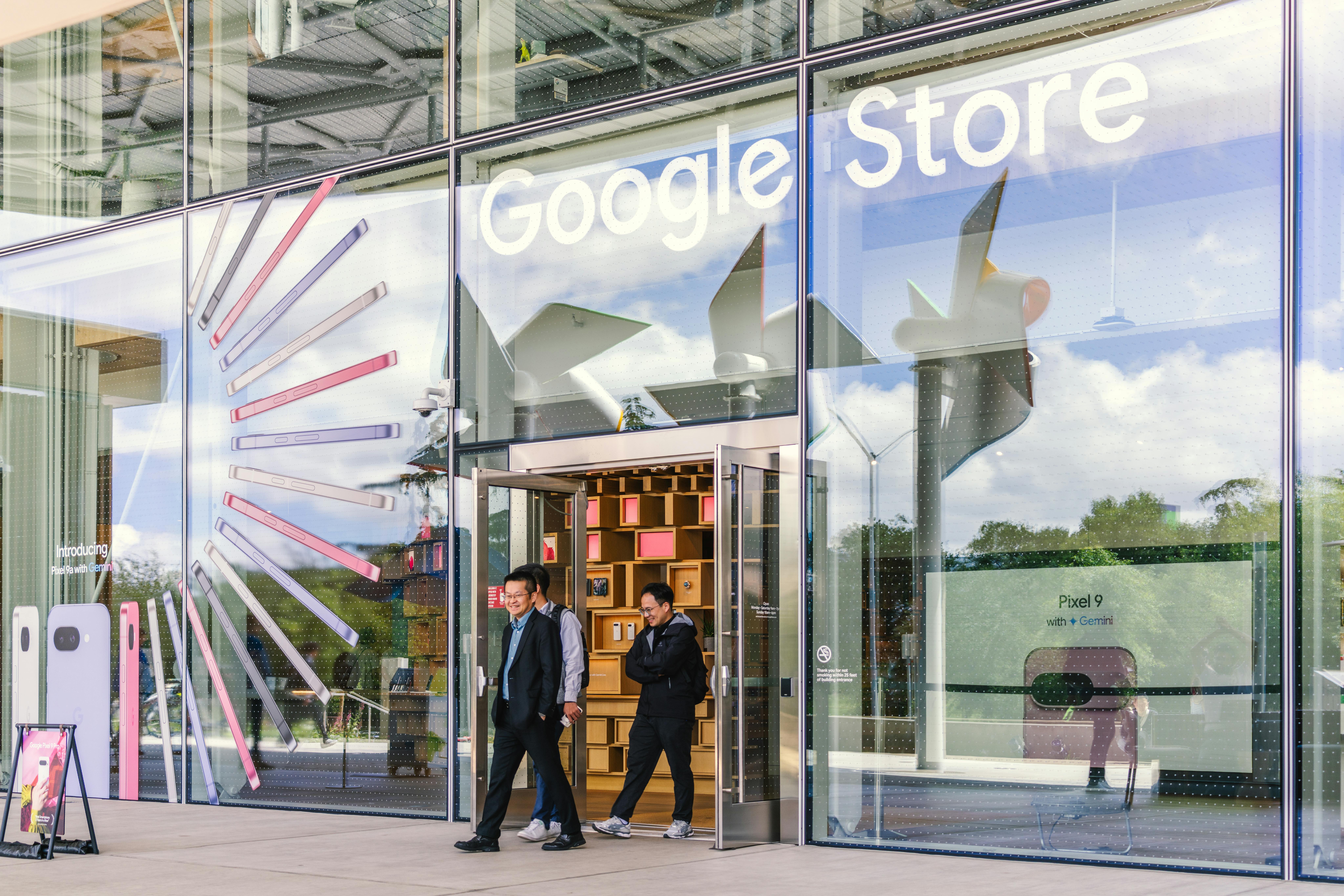Silicon Valley Unveiled: Truths, Myths & Future Trends Shaping Tech
What comes to mind when you read “Silicon Valley?” Probably something loaded—startup legends, wild IPOs, hoodie-wearing billionaires, maybe a touch of Theranos drama or an image of Stanford students launching the “next Google” from a dorm room. I’ll be honest: nothing I learned about the Valley from afar prepared me for the first time I walked into a Mountain View coworking space at 9am and realized half the people were negotiating $10M rounds over bad espresso, while the other half were plotting how to “fail fast” by noon.
Over the years, I’ve watched the legend snowball, shape-shifting to fit every new tech cycle or political moment. In reality? The Valley is far messier—and in some ways, stranger—than the myths and the memes. At its best, it’s a kinetic stew of ambition, nerd swagger, and a restless drive to redefine what “possible” means. At its worst, it’s an echo chamber drowning out the world outside the 101 freeway.
Defining Silicon Valley: More Than Geography
Funny thing is, if you’d asked 50 different people—even locals—what “counts” as Silicon Valley, you’d get nearly as many answers. It started as a strip of sleepy towns southeast of San Francisco, bounded (loosely) by the Santa Cruz Mountains and San Francisco Bay. The current fandom covers much more: Menlo Park, Palo Alto, Cupertino, Mountain View, San Jose, and, increasingly, San Francisco proper, whose local startup scene now rivals any city globally1.
The “Silicon” in “Silicon Valley” refers to the silicon semiconductor chips first mass-produced here in the 1960s, long before Google or Tesla existed. Silicon Valley was literally built around the invention of cheap, powerful microprocessors—a world-changing leap pioneered at Fairchild Semiconductor and Shockley Labs.
But the Valley is now less about what’s mined from the earth and more about mining for potential—ideas, teams, and, inevitably, investment capital. Its geographic boundaries blur as much as its identity does. “Valley culture” has seeped to Austin, New York, Berlin, Bangalore, Shenzhen, and countless other hotspots claiming the startup crown. Yet, interestingly enough, the networked web of relationships, ethos, and yes, the venture money, still pulses from the original Valley corridors2.
How Did It Happen? A Quick History of Valley DNA
Here’s where most coverage falls short: Silicon Valley didn’t just pop up because Stanford produced techies or because it’s sunny 300 days a year—even though both helped, full stop. The history is tangled: military contracts, defense spending, university risk-tolerance, and an American knack for (sometimes reckless) optimism all play massive roles.
What really strikes me looking back? Early Valley leaders—Frederick Terman, William Shockley, the “Traitorous Eight” who founded Fairchild Semiconductor—bet wildly on ideas that failed as often as they succeeded. There are plenty of skeletons in the Valley closet, especially from the ‘70s and ‘80s boom-bust cycles. Still, the region’s unique embrace of experimentation, failure as learning, and VC-fueled growth powered the creation of microchips, personal computers, the internet, social networks, cryptocurrencies, and, yes, AI.
This is a story of institutional risk—Stanford’s tech transfer office, federal grants, angel networks birthing companies that, by all logic, should have cratered. Instead, they built platforms that transformed the everyday life of billions.
Myths vs. Realities: What’s Hype, What’s Not?
Here’s the thing:
For every inspirational myth, I’ve encountered a dozen gritty, contradictory realities in private meetings, investor pitches, and local bars. It’s far too easy to oversimplify the Valley as an “innovation wonderland”—but let me clarify. The gap between perception and reality is often Grand Canyon-sized.
- Myth: Only the “best” ideas get funded.
—Reality: Network, timing, and narrative often matter as much (if not more) than pure technical genius.3 - Myth: Fail fast, fail often, always learn.
—Reality: Many failures are quietly swept aside; only select “failures” get mythologized into learning moments for the next fundraiser. - Myth: Silicon Valley is a meritocracy.
—Reality: Talent is everywhere; opportunity isn’t. Systemic bias, credentialism, and founder archetypes still dominate the landscape.4 - Myth: Unicorns are the goal.
—Reality: Billions in legacy value have been created outside unicorn status—but that rarely gets the TED talk.
I’ll be completely honest: what fascinates me even now is how often the Valley recycles its own mythology for new generations, as if the act of telling the story somehow makes the next Google or Stripe more likely to happen.
How the Ecosystem Works: From Stanford to Sand Hill Road
If you want to understand the engine room of Silicon Valley, you need to look at three overlapping circles: research universities, fast-twitch capital, and a tight-knit network of entrepreneurial talent. It’s a self-reinforcing cycle—think Stanford’s role not just in R&D, but in encouraging tech transfer and risk; venture capitalists betting on talent first, metrics second; top talent circulating between big tech, their own startups, and, increasingly, global challenger hubs.
| Ecosystem Element | Role in Valley | Key Example | Influence on Future |
|---|---|---|---|
| Stanford/UC Berkeley | Talent Pipeline, Research, IP Creation | Google, Cisco, Tesla all Stanford-rooted | Continued anchor for global tech talent5 |
| Venture Capital | Funding, Mentorship, Network Access | Sequoia, Andreessen Horowitz, Accel | Shaping global funding trends |
| Serial Entrepreneurs | Culture of Reinvestment, Advice, Talent Magnet | Elon Musk, Peter Thiel, Marissa Mayer | Creating new cycles of opportunity |
| Tech Giants | Scale, Talent Sourcing, Acquisitions | Google, Apple, Facebook, Nvidia | Providing exit routes & global reach |
Of course, the borders are always shifting. As an industry veteran once told me over cocktails in Menlo Park: “The real Silicon Valley is the sum of the people who still show up for coffee at Coupa Cafe at 7am, trading not just ideas—but reputational risk.” That’s where you see the true heart of the ecosystem: dense, competitive, connected, but surprisingly porous at the edges.
Investment, Power & Risk: Inside the Money Machine
What sets Silicon Valley apart from every wannabe “tech hub” I’ve seen? Follow the money—and the risk tolerance. The Valley’s VC culture is famous (infamous?) for amplifying everything: seedable ideas become $5M rounds in weeks, “stealth” projects inflate valuations before product/market fit, unicorns are born, failed startups are acqui-hired, and the cycle repeats—with little compunction about breaking a few things along the way.
Case in Point:
Between 2012 and 2022, Silicon Valley accounted for more than 36% of all U.S. venture capital investment, despite representing only about 3% of the country’s population6. Still, by 2023, rising interest rates, tech market corrections, and inflationary pressures forced even Valley VCs to rethink risk—down rounds, layoffs, and booming “alternative” hubs like Austin and Miami prove the model is not fixed in stone.
Interestingly, while money shapes destiny here, it doesn’t guarantee it. I’ve seen startups with deep funding wipe out in 18 months, and cash-strapped teams break through simply by out-executing better-funded rivals. Ultimately, Silicon Valley’s machine thrives not only on capital, but on a culture that treats change as the only constant—and risk as currency.

Culture Shocks: Failure, Fads & “Disruption” as Religion
Whenever someone marvels at the Valley’s output, I urge them to spend a few months here. Why? Because Silicon Valley is, above all else, a place where ambition collides with eccentricity and, often, flat-out weirdness. The “fail fast” mantra? Part survival mechanism, part cultural code. The meme-worthy office perks? Those aren’t the story—they’re a symptom.
- Failure is openly dissected and—sometimes problematically—glorified. Certain failures can “credentialize” a founder more than a safe, slow win.
- Disruption is pursued with evangelical zeal. The best way to get attention is to claim your product will “change everything.” After living here, I started seeing the limits of this thinking: not every industry wants, or needs, hyper-speed transformation.7
- Community, for all the critiques, remains surprisingly strong. Stanford dorm friends become cofounders; ex-Google PMs swap playbooks at Sunday brunch. Talent magnetism trumps almost everything.8
- Burnout is ever-present. The pressure to “always be launching” creates a cycle of dreams, burnouts, exits, recoveries, and comebacks.9
Big Question:
Is Silicon Valley’s “move fast, break things” mantra still viable in an age of regulation, growing inequality, and social backlash? Ask any Valley veteran: answers vary wildly by year—and by sector.
Work-Life, Diversity, and Other Contradictions
I’ll be honest: one of the hardest realities for me was seeing how often the Valley falls short on inclusion—not just gender or racial diversity, but in lived experience, age, and thought10.
For all the talk about “making the world a better place,” the industry is still notorious for monocultures, in-jokes, and invisible barriers for anyone “outside the circle.” That said, the last five years have brought serious (if overdue) reckoning—a flood of new initiatives, a vocal community of critics, and some real, quantifiable shifts in hiring practices and startup DNA.11
Over 40% of tech employees in Silicon Valley are foreign-born—a figure unmatched by any other U.S. metro.
This global mosaic powers both innovation and tension around equity, visas, and belonging.
Backlash, Utopia, or Burnout? The Changing Face of the Valley
As the Valley mythos grew, so did its critics—inside and out. Anyone who remembers the post-2016 pushback (think techlash, #DeleteFacebook, debates over gig economy, housing crises, and growing scrutiny of big tech power) knows that no innovation engine runs without friction.12
- Raging debates around housing affordability, gentrification, and inequality threaten to undermine community—just ask teachers (or startup founders without VC backers) about rent in Palo Alto.13
- Mental health and burnout have become actionable corporate concerns; Google and Facebook now embed wellness programs and algorithmic “burnout monitoring.”
- Big Tech’s power is now a hot political target; antitrust, data privacy, and AI ethics shape both policy and daily work life.14
- The next “Silicon Valley” may not be a place, but a network. Remote-first companies are migrating to Texas, Miami, and even Europe, chasing both savings and fresh mindsets.
Personal Take:
The Valley is always changing. The version I knew in 2008—when Uber didn’t exist and everyone still talked about MySpace in the present tense—is gone. What replaces it is anyone’s guess, but if you ask anyone who sticks around for more than one boom-bust cycle, the wisdom is: “Never bet against the Valley’s ability to reinvent itself.”
The Future: Can the Valley Stay on Top?
Let me step back for a moment. Having cycled through three major tech booms (and as many “Valley is dead!” headlines), my honest answer to “What next?” is: More change, faster, with both bigger risks and higher stakes. The world’s new unicorns may be born in Bangalore or Berlin, but the gravitational pull of the Valley’s talent, capital, and narrative power isn’t vanishing anytime soon.15
Sure, the “Valley effect” is now a global phenomenon, and remote work plus digital communities mean that tech breakthroughs can emerge from any corner. Still, there’s a density to the Valley—proximity, ideas, mentorship, legacy—that simply isn’t (yet) reproducible at scale or speed. Even insiders continue to debate if the hybrid era means an end to the physical Valley or just an evolution.16
A Few Principles for Navigating Silicon Valley’s Next Era:
- Approach the legend critically. Ask who benefits. Probe what’s excluded from the dominant myth.
- Embrace the Valley’s strengths (network effects, capital, density), but don’t drink the Kool-Aid. Insider status is overrated; real value comes from crossing boundaries.
- Invest in adaptability, mentorship, and personal resilience (burnout is real, and so is the opportunity for reinvention—for both places and people).
- Get ready for regulation, global talent competition, and the “post-geographic” startup age. The Valley’s playbook is open-source now—use what works; invent what’s missing.
Practical Takeaways & Action Steps
- Network deliberately: Silicon Valley’s true power is found at the seams—conference hallways, mentorship circles, and unexpected collisions.
- Balance optimism with scrutiny: If you’re building, fund-raising, or joining a Valley startup, scrutinize both culture and claims. The best teams welcome challenge, not just hype.
- Keep learning: Stay curious about adjacent industries, global challenger hubs, and next-gen technology (AI, climate tech, healthcare).
- Prioritize well-being: Career velocity is meaningless without personal sustainability. Zero in on mentors who value human longevity as much as product velocity.
Call to Action
Whether you’re a founder, investor, engineer, or interested outsider, don’t simply inherit the Valley’s legacy. Shape it—challenge its assumptions, contribute to its reinvention, and bring your own questions to the table. Silicon Valley’s future will be built by those willing to rewrite the playbook, not just repeat it.
References & Further Reading



